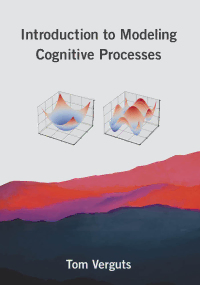Download Introduction to Modeling Cognitive Processes PDF Free - Full Version
Download Introduction to Modeling Cognitive Processes by Tom Verguts in PDF format completely FREE. No registration required, no payment needed. Get instant access to this valuable resource on PDFdrive.to!
About Introduction to Modeling Cognitive Processes
An introduction to computational modeling for cognitive neuroscientists, covering both foundational work and recent developments. Cognitive neuroscientists need sophisticated conceptual tools to make sense of their field’s proliferation of novel theories, methods, and data. Computational modeling is such a tool, enabling researchers to turn theories into precise formulations. This book offers a mathematically gentle and theoretically unified introduction to modeling cognitive processes. Theoretical exercises of varying degrees of difficulty throughout help readers develop their modeling skills. After a general introduction to cognitive modeling and optimization, the book covers models of decision making; supervised learning algorithms, including Hebbian learning, delta rule, and backpropagation; the statistical model analysis methods of model parameter estimation and model evaluation; the three recent cognitive modeling approaches of reinforcement learning, unsupervised learning, and Bayesian models; and models of social interaction. All mathematical concepts are introduced gradually, with no background in advanced topics required. Hints and solutions for exercises and a glossary follow the main text. All code in the book is Python, with the Spyder editor in the Anaconda environment. A GitHub repository with Python files enables readers to access the computer code used and start programming themselves. The book is suitable as an introduction to modeling cognitive processes for students across a range of disciplines and as a reference for researchers interested in a broad overview.
Detailed Information
| Author: | Tom Verguts |
|---|---|
| ISBN: | 9780262362313 |
| Language: | English |
| File Size: | 8.26 |
| Format: | |
| Price: | FREE |
Safe & Secure Download - No registration required
Why Choose PDFdrive for Your Free Introduction to Modeling Cognitive Processes Download?
- 100% Free: No hidden fees or subscriptions required for one book every day.
- No Registration: Immediate access is available without creating accounts for one book every day.
- Safe and Secure: Clean downloads without malware or viruses
- Multiple Formats: PDF, MOBI, Mpub,... optimized for all devices
- Educational Resource: Supporting knowledge sharing and learning
Frequently Asked Questions
Is it really free to download Introduction to Modeling Cognitive Processes PDF?
Yes, on https://PDFdrive.to you can download Introduction to Modeling Cognitive Processes by Tom Verguts completely free. We don't require any payment, subscription, or registration to access this PDF file. For 3 books every day.
How can I read Introduction to Modeling Cognitive Processes on my mobile device?
After downloading Introduction to Modeling Cognitive Processes PDF, you can open it with any PDF reader app on your phone or tablet. We recommend using Adobe Acrobat Reader, Apple Books, or Google Play Books for the best reading experience.
Is this the full version of Introduction to Modeling Cognitive Processes?
Yes, this is the complete PDF version of Introduction to Modeling Cognitive Processes by Tom Verguts. You will be able to read the entire content as in the printed version without missing any pages.
Is it legal to download Introduction to Modeling Cognitive Processes PDF for free?
https://PDFdrive.to provides links to free educational resources available online. We do not store any files on our servers. Please be aware of copyright laws in your country before downloading.
The materials shared are intended for research, educational, and personal use in accordance with fair use principles.

